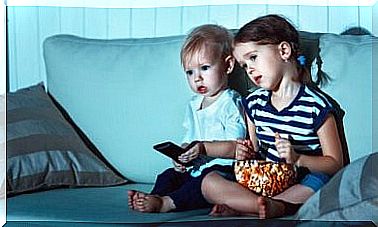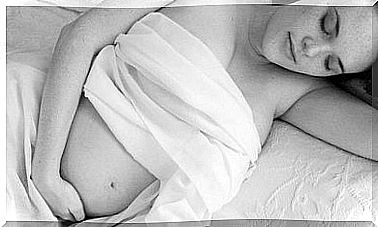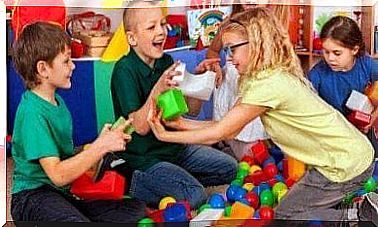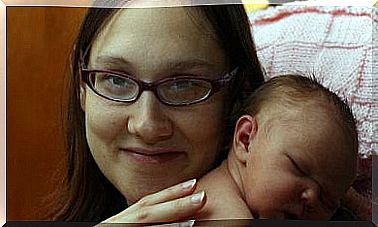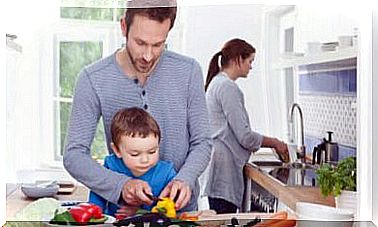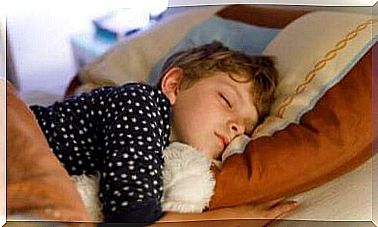Your Baby’s Smile: A Big Step In Emotional Development

Your baby’s smile is a sign of their emotional development. Read on as we delve deeper into this topic. We start with their very first smile.
A one month old baby has no shortage of emotions contrary to popular belief. At this age, a child is already able to experience a very strong sense of attachment. This is crucial to their survival. In order to survive, they must develop a strong attachment to an adult. This is usually the mother.
Crying is the most common emotion that babies show. Yet there are also other emotions that they experience:
- well-being
- relaxation
- satisfaction
- etcetera
These are emotions that you can see while being still, listening and observing the world.
Even a newborn baby can smile. During the first weeks, however, your baby’s smile is not the result of emotional well-being or happiness, but is caused by the central nervous system. It is a reflex that usually occurs during sleep.
Your baby’s smile after the first or second month is called a social smile. This is the result of interaction with the world. It is the response to all kinds of stimuli.
Babies quickly understand that mom is happy when she smiles while speaking to them. They also notice that other adults laugh when they play with them or hold them in their arms. In this way, their smile begins to adapt to the situation.
Babies laugh when they:
- to feel good
- be addressed
- get what they want
Seeing something interesting can also cause a smile.
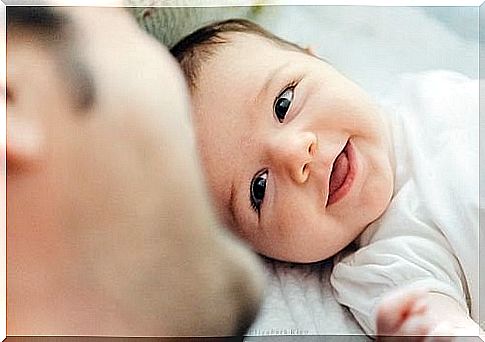
Around this age comes the realization that in addition to crying, laughter can also attract the attention of adults.
Some children laugh for the first time around the age of four months. Some a little earlier, some a little later. At this age, the baby starts to laugh when stimulated, just like adults. They do this when they find something funny: a doll moving, being tickled…
After the fourth month of life, babies will no longer smile at everyone. They will only show emotions towards the people they know or towards strangers with whom they feel good.
They begin to understand that laughter is related to attachment and that they can laugh at whoever they want. This is known as the differential smile phase.
Your baby’s smile: a breakthrough in emotional development
As a child begins to understand the world around him, he learns to imitate the people around him. They learn how to respond to stimuli. In addition, their affective and psychological development begins to improve.
A one-month-old baby learns that affection and social contact can be enhanced by smiling. They learn that you can achieve more with laughter than with a tantrum and crying. As they grow up, they learn that laughter is a useful means of getting the things they want, both materially and emotionally.
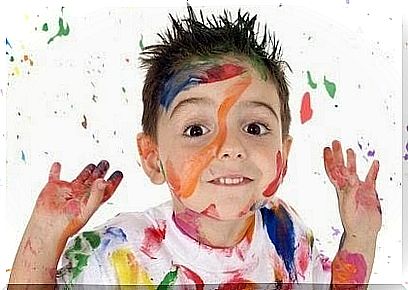
The smiles of those around them also help to amplify their emotions. They will feel safer when someone nearby is smiling. For example, when a dog walks by on the street, they can be scared. Mom’s smile can comfort them and make it clear that there is no danger.
The smile of a 2 year old
For a 2-year-old, smiling and laughing is no longer a reflex or an expression of happiness. It is a powerful tool for achieving their goals and for making adults give in to their wishes. In fact, this is a form of emotional blackmail.
Around this age it is interesting to observe the little dangling. They test the people around them and do things to provoke reactions. When their pranks go bad, they know that a smile might lead to a lighter sentence.
Laughter will also provide incentives for their emotional and cognitive development. They will laugh at absurd situations: a child falling or seeing themselves fall on a screen.
Their laughter will help them grow and improve their behavior and well-being as human beings. They will become friendlier, make more friends and be happier.
